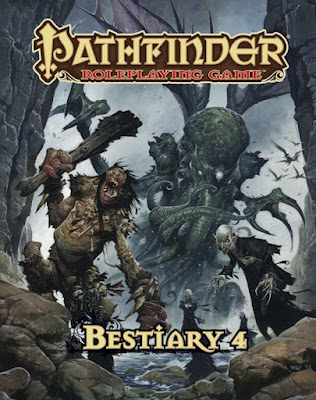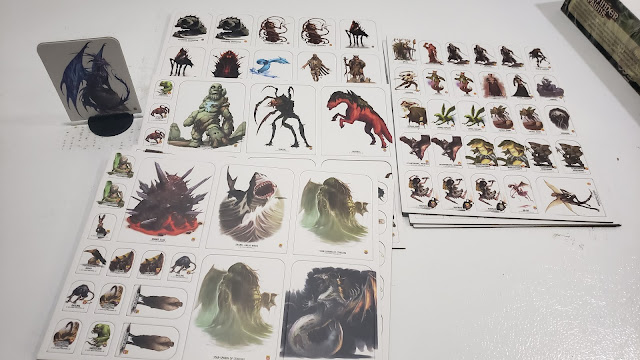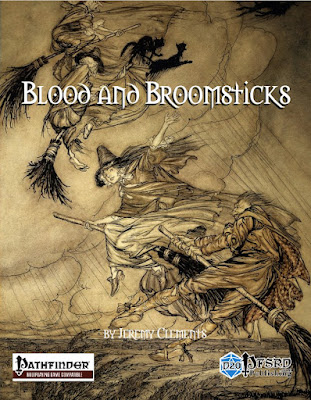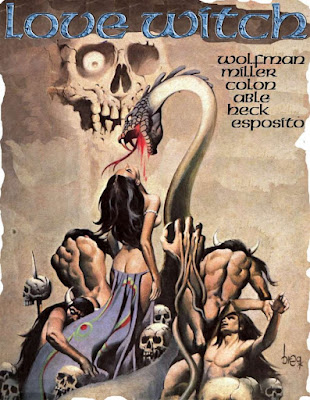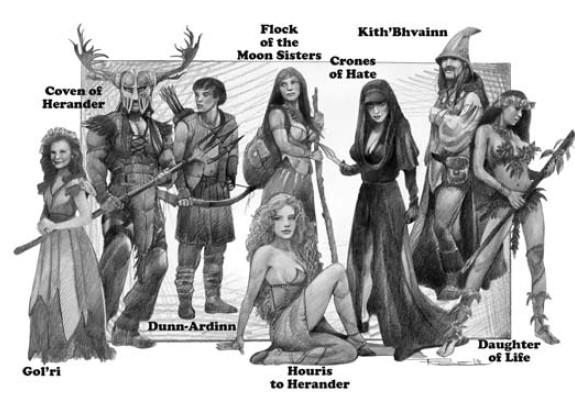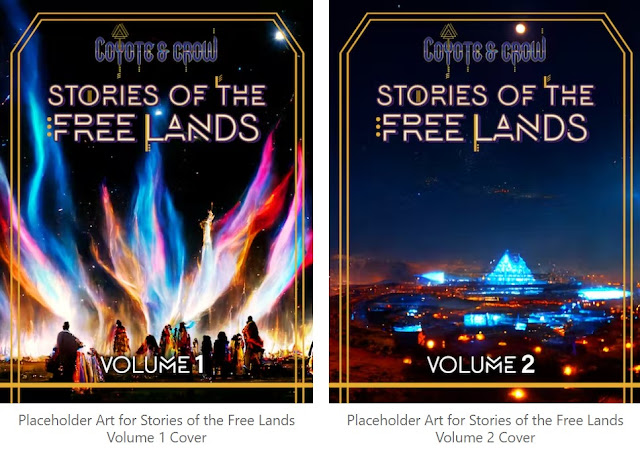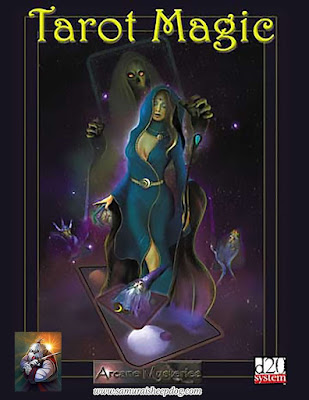Tonight I am doing my third Samurai Sheepdog product, but this was not planned out that way. Also, this is another former Mystic Eye Games product that Samurai Sheepdog has brought back. It is
also one of my favorite books from the early d20 days.
As always I will be following my rules for these reviews.
The Pantheon and Pagan Faiths
PDF. 208 pages. Color cover. Black & White interior art.
Released originally in 2003 by Mystic Eye Games this was part of their campaign "Hunt the Rise of Evil" for their World of Gothos world. I remember at the time thinking it was a touch cliché but still fun and it kept my attention. This was my favorite book in all their publications to that point.
Samurai Sheepdog is, as far as I can tell, the same people that made up Mystic Eye Games. So this is not a case of a new publisher buying the right to old stock, it is a new publisher re-organized from the remains of the old. Does this mean we could get more "Hunt the Rise of Evil" products? Maybe! But until then let's discuss this older product.
The obvious spiritual parent of this book is AD&D 2nd edition Faiths & Avatars book. Right up the art of the various priests, shamans, and witches of the various faiths in a lineup. I will not lie, it did appeal to me and help me know right away what this book was about.
While this book is overtly for the Hunt the Rise of Evil campaign and the World of Gothos I used it rather nicely with my D&D 3.x games where I feel added materials from a lot of different d20 publishers. It is "labeled" but also flexible.
This is also a good-sized book at 208 page and 10 Chapters.
Introduction
This covers what this book is and how to use it.
Chapter 1: Piety and Conversion
This covers the rules of dealing with the various gods and how they can grant favor. This is where we get to see our lineup of clerics. Additionally, there are rules for conversions. So if you are playing clerics in a d20/D&D 3.x game then this a great source of information.
Chapter 2: Core Divine Character Classes
Covers the expected classes like Clerics, Druids, Paladins, and Rangers. We also get Shamans and Witches/Warlocks. Both classes are well-detailed. These witches are, naturally, divine spellcasters not arcane. The witch can also choose to be a White Witch or a Black Witch which is also called a Warlock. Witches are even further divided into covens associated with a different god of faith. The covens are actually very interesting and kept me coming back to this book. They are also fairly tied to this world and these gods.
Chapter 3: Prestige Classes
I will not lie. I do like Prestige Classes. I like the idea of being able to further differentiate your character later inplay. I do wish that 5e had prestige classes not tied to their base classes so much.
These Prestige Classes are tied to this world but it looks a little easier to detangle them given the way Prestige Classes were most often constructed at the time. Here we have the Beast Friend, Covenant to the Hunt, Furies of Destruction, Hammers of Justice, Inquisitor of Justice, Ovate Bards (one of my favorites here), Slaughter Priest, Sorcerer Priest of Vlag, Strictor, and The Taken. I did not try many of these but I did try the Ovate Bard and thought it was really great.
Chapter 4: Feats
There are some interesting feats tied with faith, birth, and how people can approach the divine. It takes a game mechanic and weaves it back into the structure of the world. I rather like it to be honest. But, let's be honest, there are a lot of feats here. Maybe more than we really need.
Chapter 5: Spells in Gothos
Ok. You know I love my magic and this chapter does not disappoint. We get new cleric domains and new witch and shaman spells. Nearly 40 pages worth. There are new spells as expected for Bards, Clerics, Druids, Paladins, and Rangers. There are even some new one for Sorcerers/Wizards.
Chapter 6: Saints and Sainthood
Now, this is an interesting chapter. Back in my starting days of D&D Basic I played a Cleric. We decided that this cleric would later be a Saint of those who fight undead and demons in my AD&D world. (Interestingly enough that same said cleric is a Patron Saint in the Duchy of Valnwall now.) This chapter lists a numbers of saints and the benefit to having a patron saint. There are both good and evil ones here.
I think most gamers of a certain age will agree that the Patron Saint of Adventures is St. Aleena the Brave.
Chapter 7: The Pantheon
This covers the gods, the major clerics, and centers of worship or divine power in the world of Gothos. The gods are wonderfully detailed though like gods should they are tied to their world.
Chapter 8: Outscat Gods
Ah, now here is something not often covered in campaign books. (well. the Forgotten Realms does a good job here too). This covers all the gods that have fallen, been kicked out, or have left the main pantheons including our cover boy Chargrond. The gods here also get some special rituals. These gods are all evil.
Chapter 9: Outsider Gods
Like the outcasts, these gods are not part of the main pantheons. Unlike the outcast gods, they never were a part of it to begin with. Their alignments vary. Like the previous two chapters in addition to gods, we get major clerics/worshipers and some rituals.
Chapter 10: Pagan Gods
In modern parlance, these are the "Old Gods" to The Pantheon's "New Gods." These are the gods followed by Druids and Witches. Like the previous three chapters we gets gods, major worshipers including some specialty priests, and rituals.
We end with the OGL and a very nice index.
This book packs a lot into its 200+ pages and for less than the price of a Grande PSL you get a good value.
The print option has long been OOP, but sometimes you can still find them on eBay or Noble Knight.
I unloaded mine in my D&D 3.x purge. Well. At least I still have the PDF!



